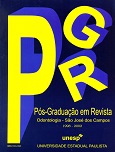Analysis of implant/abutment marginal fitting
DOI:
https://doi.org/10.14295/bds.2001.v4i2.112Abstract
O índice de sucesso dos implantes osseointegrados gira em torno de 90%. Apesar de se conhecer bem os mecanismos da osseointegração ainda ocorrem falhas nos sistemas de implantes. Pesquisas recentes atribuem essas falhas, principalmente, à reabilitação protética do paciente. O desajuste entre a base do implante e o pilar protético e a falta de adaptação passiva entre a prótese e os pilares podem levar a fraturas tanto dos componentes protéticos quanto do parafuso do pilar ou do próprio implante; pode também levar à distribuição inadequada das forças ao osso de suporte, acúmulo de bactérias e até mesmo à perda da osseointegração. A natureza da perda ou deslocamento das próteses é complexa, envolvendo fatores como: material do pilar protético, tipo de encaixe, grau de conicidade, precisão de usinagem dos componentes do sistema, fadiga, penetração de fluidos bucais, variedades de mastigação, dentre outros. Considerando a importância de uma longevidade maior dos implantes osseointegrados e da necessidade de se obter a melhor adaptação possível entre base do implante e pilar protético, esse trabalho realizou uma revisão da literatura sobre a importância do perfeito ajuste entre esses dois componentes, suas implicações biomecânicas, funcionais, biológicas e clínicas e ainda, levantar os diferentes métodos para estudo dessa interface de união.
Downloads
Downloads
Published
How to Cite
Issue
Section
License
Brazilian Dental Science uses the Creative Commons (CC-BY 4.0) license, thus preserving the integrity of articles in an open access environment. The journal allows the author to retain publishing rights without restrictions.
=================




























